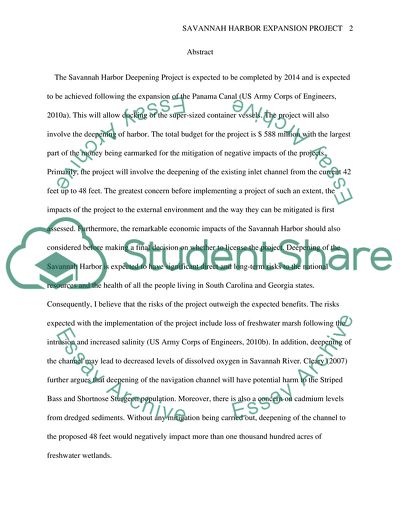Cite this document
(Whether Savannah Harbour Expansion Project Is Worth the Shot Term Paper, n.d.)
Whether Savannah Harbour Expansion Project Is Worth the Shot Term Paper. https://studentshare.org/engineering-and-construction/1767498-savannah-harbor-expansion-project-the-risk-is-not-worth-the-reward
Whether Savannah Harbour Expansion Project Is Worth the Shot Term Paper. https://studentshare.org/engineering-and-construction/1767498-savannah-harbor-expansion-project-the-risk-is-not-worth-the-reward
(Whether Savannah Harbour Expansion Project Is Worth the Shot Term Paper)
Whether Savannah Harbour Expansion Project Is Worth the Shot Term Paper. https://studentshare.org/engineering-and-construction/1767498-savannah-harbor-expansion-project-the-risk-is-not-worth-the-reward.
Whether Savannah Harbour Expansion Project Is Worth the Shot Term Paper. https://studentshare.org/engineering-and-construction/1767498-savannah-harbor-expansion-project-the-risk-is-not-worth-the-reward.
“Whether Savannah Harbour Expansion Project Is Worth the Shot Term Paper”. https://studentshare.org/engineering-and-construction/1767498-savannah-harbor-expansion-project-the-risk-is-not-worth-the-reward.


